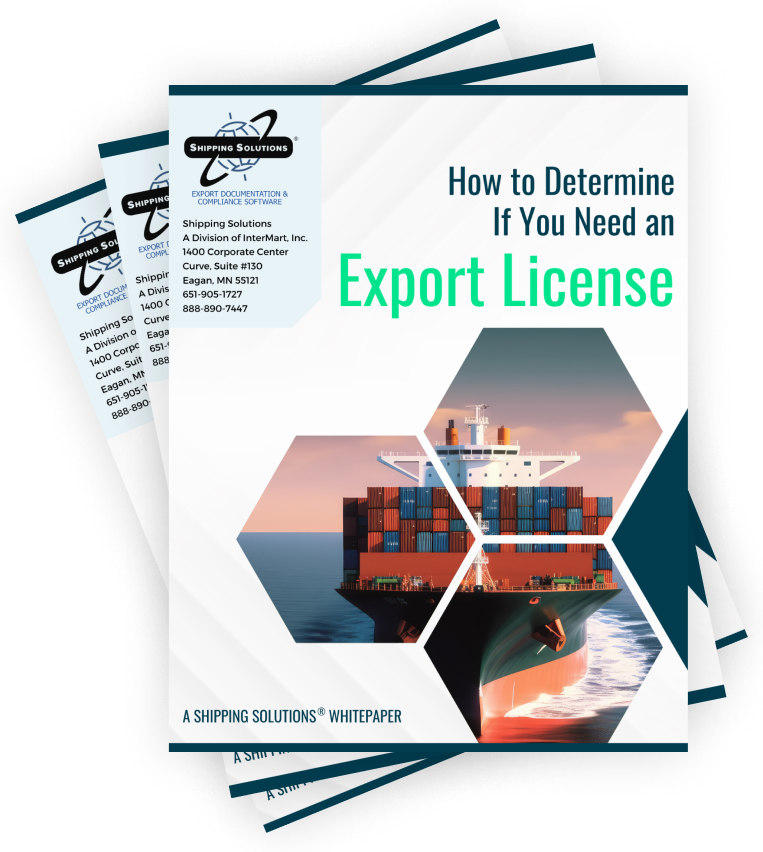The International Trade Blog Export Compliance
When U.S. Controls Apply to Your Non-U.S. Product: Understanding De Minimis Rules
On: August 9, 2023 | By:  Lindsay Bernsen Wardlaw |
5 min. read
Lindsay Bernsen Wardlaw |
5 min. read
 As discussed in my previous post, you may need a U.S. export license to conduct your transaction even where its only nexus to the United States is some of the product’s constituent inputs or design work—if there is more than a de minimis amount of U.S.-origin content. Or, when the U.S. Foreign Direct Product Rule applies, you may need a U.S. export license on the basis of an even more tenuous connection: If your product is made in a facility using equipment that was produced using U.S. know-how (software or technology), even if the product and its manufacturing equipment contain no U.S.-origin components at all—or contain so little that they would not normally be captured by U.S. export controls by virtue of the de minimis rule.
As discussed in my previous post, you may need a U.S. export license to conduct your transaction even where its only nexus to the United States is some of the product’s constituent inputs or design work—if there is more than a de minimis amount of U.S.-origin content. Or, when the U.S. Foreign Direct Product Rule applies, you may need a U.S. export license on the basis of an even more tenuous connection: If your product is made in a facility using equipment that was produced using U.S. know-how (software or technology), even if the product and its manufacturing equipment contain no U.S.-origin components at all—or contain so little that they would not normally be captured by U.S. export controls by virtue of the de minimis rule.
Calculating whether an item contains more than a de minimis amount of U.S. content or assessing whether an item is captured by one of the Foreign Direct Product Rules can be complicated.
In this post, we will focus on how to conduct a de minimis assessment.
De minimis assessment is divided into the following stages:
- Generate or request a costed bill of material for your end product.
- Note that this bill of materials should list the cost, country of origin and U.S. export control classification number, if applicable, for each product component.
- Determine whether any of a product’s components are considered U.S.-origin.
- Tip: This assessment works best if you have instructed your suppliers to provide U.S. export control classification numbers to you when their products are “subject to the EAR” (that is, when they have confirmed whether their own products are subject to U.S. export controls)—that way, you know that any product that has been assigned an export control classification number (or a designation of EAR99) should be considered “U.S. origin” for the purpose of this analysis.
- Though you need to evaluate the origin of your product’s components, you don’t need to evaluate the origin of your product’s sub-components. This is known as the “second incorporation rule.” (These sub-components were first incorporated into your product’s components and now have been incorporated, for a second time, into your product, within your product’s components. You are allowed to limit your evaluation to the second incorporation only.)
- Determine the classifications that apply to those U.S.-origin components.
- Determine the licensing requirement that applies to each of the U.S.-origin components, based on its classification and the end product’s intended destination.
- Taking the cost for each component from the costed bill of materials, sum the value of all components that meet both of the following criteria: They are (1) U.S.-origin components that are (2) controlled to the destination.
- As for classification, you may need to seek help from a professional to fully consider all licensing implications for these components and the end item.
- Divide the value of all U.S.-origin components that are controlled to the destination by the value of all components within the end product (e.g., in an equation that looks like [value of U.S.-controlled components / value all components]). Convert the answer into a percentage.
- Determine if the result of this equation results in a de minimis percentage that is controlled to the end product’s destination—for shipments to most countries this percentage is 25%, but a lower threshold of 10% applies to countries that the United States has embargoed (see country groups E:1 and E:2 here). In addition, the presence of any components with certain more sensitive classifications or that are controlled by the International Traffic in Arms Regulations’ U.S. Munitions List rather than the Export Administration Regulations’ Commerce Control List will cause the entire end item to be controlled.
- The U.S. Bureau of Industry and Security has provided guidance on how to calculate an item’s U.S.-origin content. This guidance also provides a list of classifications that will trigger U.S. export controls if present in your product in any amount.
Notice that only U.S.-origin components that require an export license to the end product’s country of destination are included in the de minimis calculation, not all components that are U.S.-origin. In practice, this means that components that are EAR99 or controlled for antiterrorism reasons—which can be exported to most destinations without a license—can often be excluded from an end product’s de minimis analysis. (The exception is when shipping to a restricted end user or end use or when shipping to an embargoed country. EAR99 goods may sometimes be sent to embargoed countries without a license, but goods controlled for antiterrorism reasons may not be.)
It also means that each time you ship the same end product to a new destination and consignee, you have to conduct a new de minimis analysis, because the de minimis analysis is destination-specific. Put another way, whether non-U.S. items are subject to the EAR depends on where they are going and who they are going to! That can be awfully frustrating to non-U.S. exporters who just want a hard and fast rule for whether any given item is subject to U.S. export controls.
For this reason, companies with policies and controls that prohibit shipments to embargoed countries and to restricted parties (at least, absent special authorization internally and from the proper government authorities) are best positioned to construct procedures that let them generalize as to whether an item manufactured outside of the United States is or is not subject to U.S. controls across multiple potential purchasers. However, the most accurate results will always be determined on a case-by-case basis, and companies should be careful about over-relying on generalizations.
Once you know whether your product is subject to U.S. export controls based on its U.S. origin content, then you must conduct a U.S. export control classification and licensing analysis for the end product, including evaluating licensing restrictions based on intended destination, end user and end use.
If it turns out that the U.S. government has jurisdiction over your non-U.S. item and required a license for your transaction that you did not request, you could be subject to civil or criminal penalties, so take the time to get this analysis right. When in doubt, seek the help of a U.S. export compliance professional!
Like what you read? Join thousands of exporters and importers who subscribe to Passages: The International Trade Blog. You'll get the latest news and tips for exporters and importers delivered right to your inbox.

About the Author: Lindsay Bernsen Wardlaw
Lindsay is an international trade attorney and former trade compliance manager with extensive experience developing export controls, sanctions, antiboycott and customs compliance programs, both in-house and for clients. She is currently an associate at Gibson, Dunn & Crutcher LLP. Formerly, she was the Vice President of Trade Advisory Services for Amalie Trade Compliance Consulting, a boutique consulting firm that focuses on practical and sustainable compliance solutions. Lindsay holds a B.A. in International Political Economy with a minor in Political Science. She has a J.D. from the University of Michigan School of Law. She is also a Licensed Customs Broker.
Lindsay’s blog posts are not legal advice.



